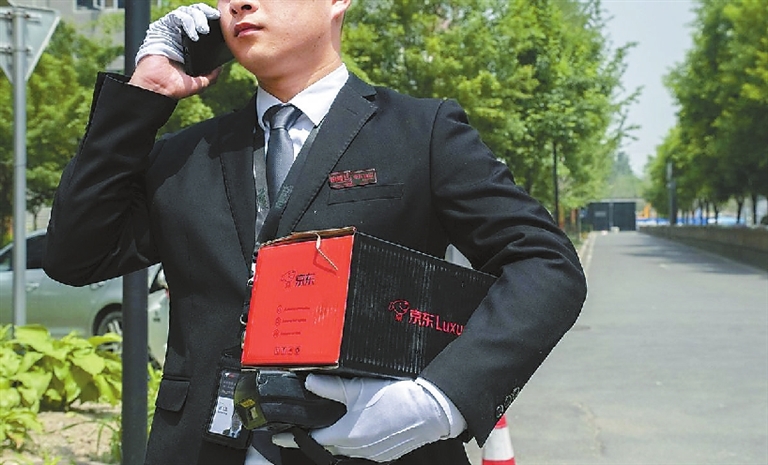
THE Beijing delivery man who arrived with Christine Lin’s new silver bracelet came dressed in an elegant black suit — complete with white gloves. He knocked on the door of her apartment holding a delicate black box tied with a golden ribbon. Handing it to Lin, he asked her to confirm receipt with a fountain pen. Inside, under layers of glossy wrapping paper, was the US$90 limited-edition bracelet from a brand co-founded by Hermes International and a local designer along with a thank-you card from JD.com, the e-commerce site that had arranged the special delivery. “It was so ceremonial,’’ said Lin, a 23-year-old app and product designer. “Shopping on these online platforms is like enjoying a visual feast that’s curated for you.’’ Shoppers from China accounted for a third of global spending on luxury items last year, and Chinese luxury consumption will nearly double to about 1.2 trillion yuan (US$175 billion) by 2025 from 770 billion yuan last year, consultancy McKinsey & Co. estimated in a report published April 26. But many in China are now making those high-end purchases online, a challenge for companies that have built their businesses and the aura around their brands by coddling shoppers inside swanky stores with personalized service. The changes are forcing global luxury companies to sometimes rethink decades-old strategies and test new ones tailored to the Chinese market. Keeping Chinese consumers engaged is becoming critical as the economy slows amid the trade war. While the American market accounts for about 44 percent of global online sales of luxury goods, Asia is the new growth engine of high-end brands, according to Bain & Co. That’s why many big names in luxury are teaming up with Internet companies to offer sales and services like the white-gloved butler-style delivery that are rare in the United States. They’re hoping to appeal to younger consumers just getting started buying designer jewelry, clothes or accessories. Still, selling online carries added risks for brands who’ve built their lofty cachet by emphasizing exclusivity. “They don’t want to be too accessible,’’ said Clement Ledormeur, general manager of 31Ten, a digital consulting agency in Shanghai. “You can’t be next to underwear or a pair of slacks.’’ That’s one attraction of platforms dedicated to designer goods, like Alibaba Group Holding Ltd.’s Tmall Luxury Pavilion, he said. Chinese online retailer JD.com Inc. and London-based Farfetch Ltd. in February announced a deal to merge JD’s luxury site Toplife into Farfetch China. The deal provides JD customers with access to the British retailer’s more than 1,000 luxury brands. Farfetch is working on the integration of Toplife and expects to launch by the end of next month, chief executive officer Jose Neves said on a conference call with analysts. “Brands know that they need to crack China, and they need to crack China digitally,” said Neves after the company announced a quarterly loss that was wider than expected. At Ralph Lauren Corp., e-commerce sales are up across the board, but chief executive officer Patrice Louvet said he looks at online shopping with caution, carefully selecting the places that make sense for his brand to live on. In China, that includes both Tmall and JD.com. “We’re not jumping on every single opportunity out there,” Louvet said in an interview of his e-commerce business globally. But “if that’s where the consumer wants to shop, that’s where we need to be.” The 61.6 billion yuan that McKinsey estimates Chinese shoppers spent online on luxury goods last year is a small fraction of the total. McKinsey estimates that China’s online luxury spending will more than double to about 147 billion yuan by 2025. Louis Vuitton, which operates its own e-commerce site for China, this month launched an official account on social commerce site Xiaohongshu, or “Little Red Book,” to promote its brand with Chinese consumers. Brands like Alexander McQueen, Burberry and Saint Laurent have teamed up with Chinese companies to expand their digital footprints.(SD-Agencies) | 
